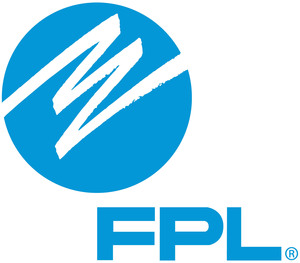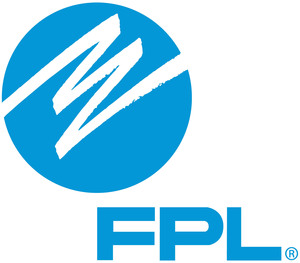JUNO BEACH, Fla., June 13, 2012 /PRNewswire/ -- For the third straight year, Florida Power & Light Company's typical residential customers once again have the lowest bills in the state. FPL today announced the results of a comparative look at energy costs in the first quarter of 2012 for residential customers in Florida. FPL has had the lowest typical residential customer bill on an annualized basis since 2009.
(Logo: http://photos.prnewswire.com/prnh/20120301/FL62738LOGO )
FPL's typical residential customer bills are the lowest of all of the state's 55 electric utilities, 24 percent lower than the latest national average and 23 percent less than the 2011 Florida average for investor-owned utilities. The residential customer monthly usage median for FPL customers is 975 kWh, which means that the majority of FPL customer households consume less than the standard 1,000-kWh typical bill benchmark of $94.62 (January - March 2012 rates).
To obtain the average monthly residential bill, FPL sourced bill data from the Florida Public Service Commission, Florida Municipal Electric Association, Reedy Creek Improvement District, Florida Electric Cooperatives Association and Jacksonville Electric Authority. The analysis took into account each utility's 1,000-kWh residential bill which includes customer charge, non-fuel energy, fuel, storm charges and the state gross receipts tax of approximately 2.5 percent. Other potential fees including franchise fees and utility taxes were not factored into the analysis as they are not consistent measures for each utility.
For a national comparison, the Edison Electric Institute (EEI) reports biannually the typical energy bills for each member company based on rates effective in January and July.
Most FPL customers power all of the electricity needs of their home for a few dollars a day on average over the year. FPL's typical residential customer bill is about 13 percent lower today than it was in 2006. Compared to prices in 2006, food and health care costs today are at least 20 percent higher, while a gallon of gasoline is more than 40 percent higher.
"It's important that FPL provides its customers with the best value possible, which means residential bills that are the lowest in Florida and reliability that is among the very best in the country. We're working to keep it that way through technology investments and operational efficiencies that save our customers money. It all adds up to reliable electric service that costs less per day than a latte or a slice of pizza," said FPL President Eric Silagy.
Over the five years from 2010 through 2014, FPL plans to invest approximately $15 billion to strengthen and improve Florida's electric generation and delivery system. By installing state-of-the-art, combined-cycle, natural gas turbines at several power plants, FPL has cut fuel costs by $5.5 billion since 2001 and passed those savings on to customers. Fuel costs for FPL customers have averaged nearly $5 billion per year over the five years ending in 2011, so FPL's fuel efficiency since 2001 has saved customers the equivalent of about one year's supply of fuel. Altogether, FPL's completed and planned investments from 2001 to 2016 are expected to save FPL customers an estimated $1.2 billion in fuel costs per year starting in 2016.
FPL is asking the Florida Public Service Commission for a rate increase in 2013 equaling about 23 cents a day on the base portion of a typical residential bill so the company can continue to maintain its successful performance for the benefit of its customers. Even with this increase, FPL expects its typical residential bill will still be the lowest in the state and well below the national average. Additionally, because of investments in fuel efficiency and lower fuel prices, the net increase that typical customers would actually pay on their bills is less than five cents a day. FPL has created an online calculator at www.FPL.com/answers where residential customers can input their energy usage to see exactly how the increase would affect their bills.
"Customers also play a role in reducing energy costs and can make their bills even lower by participating in FPL's conservation programs," added Silagy. "Because of our partnership with customers, FPL has saved more megawatts than nearly any other utility in the country. These efforts have allowed FPL to avoid building 13 medium-sized power plants since 1980."
FPL customers have the lowest typical residential bill in the state and they can make it even lower with energy efficiency programs, including the FPL Online Home Energy Survey where customers can get a detailed analysis of home energy use, a personalized savings plan and recommendations and tips for energy efficiency.
In addition to FPL's residential customers having the lowest bills in the state, FPL business customers have bills that are among the lowest in Florida.
Florida Power & Light Company
Florida Power & Light Company is the largest rate-regulated electric utility in Florida and serves the third largest number of customers of any electric utility in the United States. FPL serves approximately 4.6 million customer accounts and is a leading Florida employer with approximately 10,000 employees as of year-end 2011. During the five year period ended December 31, 2011, the company delivered the best service reliability among Florida investor-owned utilities, while its typical residential customer bills, based on data available in December 2011, are about 25 percent below the national average. A clean energy leader, FPL has one of the lowest emissions profiles and one of the leading energy efficiency programs among utilities nationwide. FPL is a subsidiary of Juno Beach, Fla.-based NextEra Energy, Inc. (NYSE: NEE). For more information, visit www.FPL.com
SOURCE Florida Power & Light Company
WANT YOUR COMPANY'S NEWS FEATURED ON PRNEWSWIRE.COM?
Newsrooms &
Influencers
Digital Media
Outlets
Journalists
Opted In





Share this article